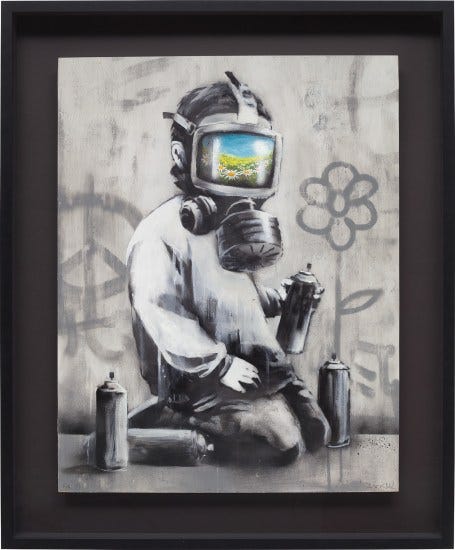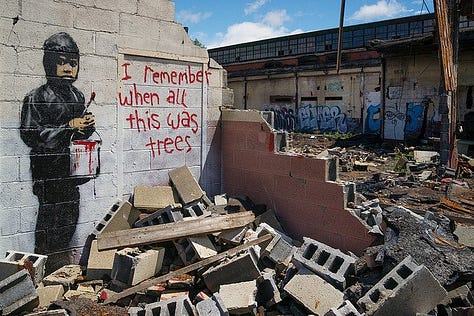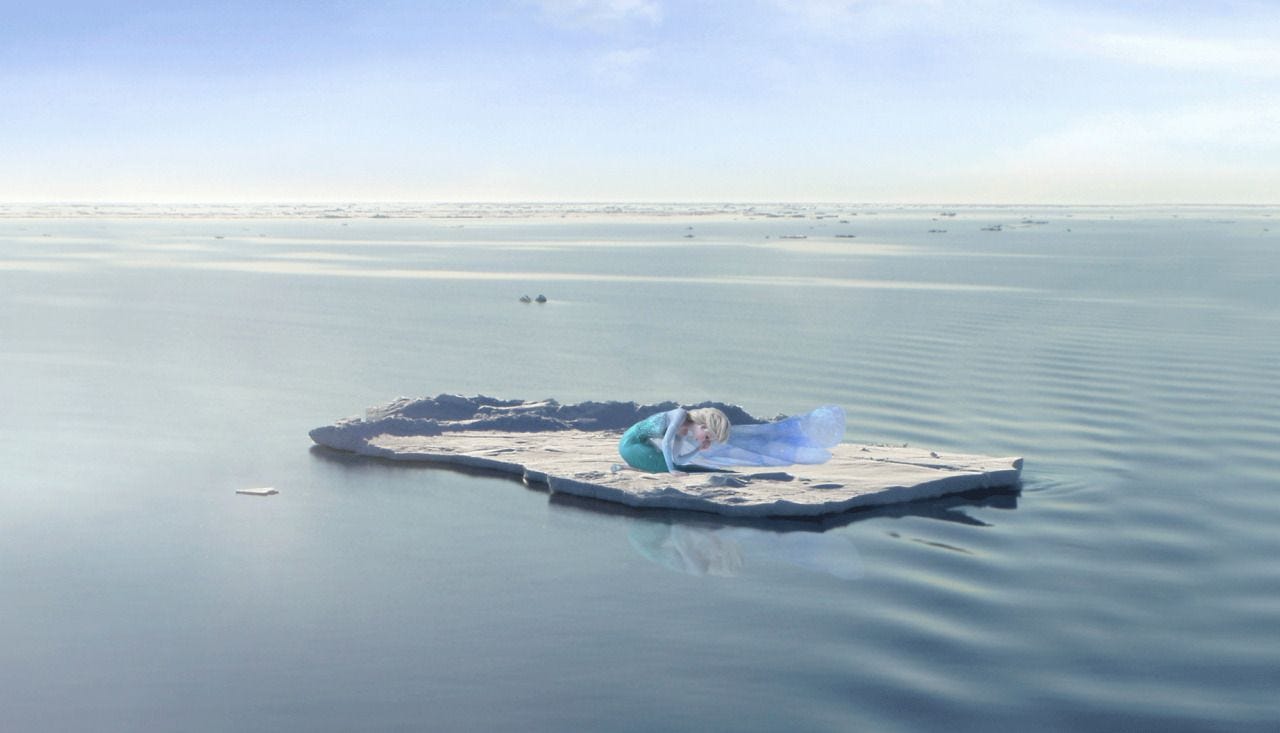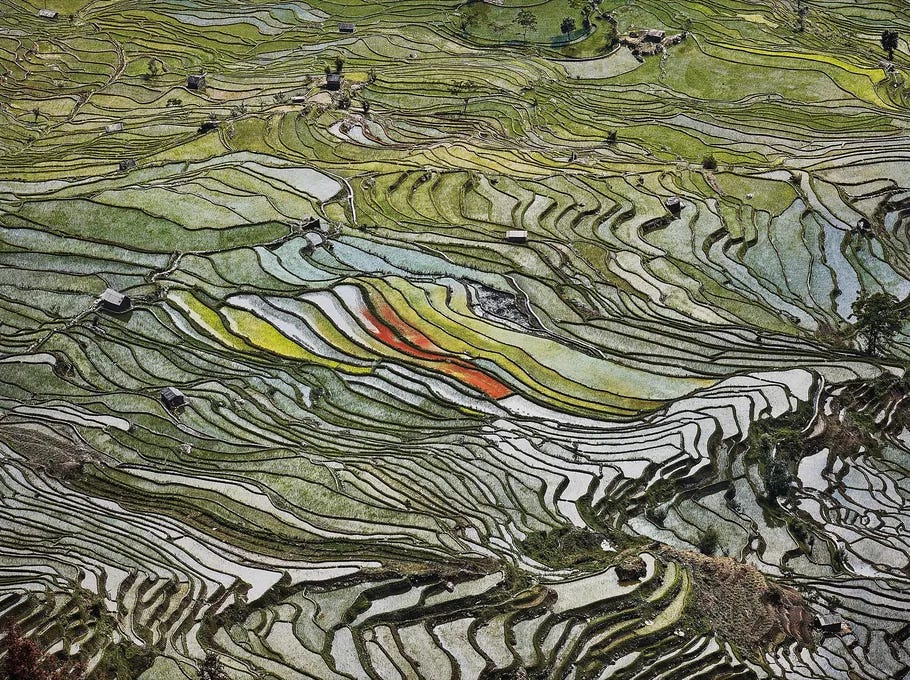In the age of climate change, we now have fire, earth, wind, and water to deal with but not a single Air Bender to help. While many feel helpless in the face of significant environmental issues, others have proactively used their artistic talents and skills to incite societal change. Art and design can’t fix everything (or anything) but it can start to socialise people to new and important ideas such as sustainability in a world battling climate change. Ecological Art or “Eco Art” is a contemporary form of art created by artists who embed their concerns about local and global environmental degradation into their work. As discussed in my Emotional Spending and How Design Can Help post, attractive design acts as an incentive to engage with the important messaging, which for Eco-Artists is environmental activism. Decades of marketing have shown that people are incentivised by the idea that they might feel ‘cool’ after associating with a new, fresh-looking piece of design or art. ‘Sustainability’ needs a major rebrand after a Gwenyth Paltrow-style soft launch and artists are banding together to raise the environments profile. Encouraging others to protect the environment is a priority, and there are many artists out there using Eco-Art for designer resistance.
Banksy, an outwardly political artist, feels like an obvious place to start talking about environmental activism in the art space. Banksy, whoever they are (their identity might be revealed soon according to this completely reliable article from The Sun) has an Olympic-level gift for impactful messaging as an artist. Banksy installs his art at night, usually in a public place like a wall using graffiti, and stenciling, and usually incorporates the elements of the environment itself. Banksy is innocuously antisocial in using technical vandalism as art and having no social presence; this concept is the strength behind his activism. He cultivated a persona that operates incognito and accordingly has always been engulfed in global intrigue. His politically laden work then appears on buildings that act as canvases and are the very buildings that are destroying the environment. His work is infamous with local councils but also beloved by the community. Due to his notoriety as an artist, people do not want his art to be removed. In this sense, I cannot think of a more successful ecological artist than Banksy. If people defend Banksy just because they like how his art looks or if the art is destroyed, the media attention still preserves his work’s environmental message - and this is perfect.



Climate change is a modern environmental emergency and therefore Eco-Art is a modern concept and/or movement. Banksy's art feels appropriately post-modern in the way he composites several different mediums to deliver a conceptual piece of work. Post-modernism is often defined by intertextuality, and Banksy is certainly,
…playful with pastiche and parody, replete with détourned ready-mades and quoted references, at once street-wise…
The images are all recognisable but their original meaning is usually subverted against the back of dirty building alongside a pointed statement. Jeff Hong uses images similarly depicting well-known Disney characters and superimposes them into the real world in a series called ‘Unhappily Ever After’. This well-integrated picture got me and I can’t let it go… because I love Elsa and icebergs. The messaging is very clear and simple which is a quality of Hong’s Eco-Art that I like.
“American artist Jeff Hong integrated famous Disney characters into realist situations of environmental degradation. In so doing, the blissful fairy-tale like values projected by the multinational company’s animations strongly contrasted with the realities of global warming, deforestation or pollution.”
While Banksy and Hong have used pastiche and compositing for their images, Edward Burtynsky simply photographs the human impact on the environment. The photograph below is called ‘Rice Terraces #2’ and is an aerial shot of Western Yunnan Province in China. Artsy.net wrote that,
…Burtynsky’s arresting large-scale images of the scarred Earth inspire both awe and devastation. By providing a bird’s-eye view, he reveals a terraformed planet. This macro-level understanding of our impact is paradigm-shifting, fundamentally changing the way we perceive the impact of industries like agriculture, mining, and urbanization.
The message in Burtynsky’s work is more abstract than Banksy's or Hong’s and would appeal to people who enjoy interpreting art. In ‘Rice Terraces #2’ I’m not sure you would even know this was a photograph or that it captures the impact of agriculture in China but the image is so compelling you want to know more about it. This piece of work belonged to a much larger body of work and there is plenty you can read to support the image. Burtynsky’s work attracts a different perhaps more introspective audience who would read around the image, attend the exhibition, watch TED talks where he has spoken about his work, and also read the accompanying interviews that has done with the media. In this sense, Burtynskys is less effective as a universal communicative tool but impactful if you choose to engage.
Eco-art is distinct because it is often underscored by sadness and devastation about the impact of climate change. The distress is palpable and rightly so. In the art above, the artists have taken the familiar and uniquely laced the image with an emotional foreboding message. They are a critique of the world we live in and as eco-art have an important role to play in delivering and repeating the message of sustainability. Eco-art is the designer resistance we all need.
A dose of wonder this week
Auckland: Auckland Art Gallery ‘Simon Denny | Optimism’ exhibition
In this new commission, Berlin-based New Zealand artist Simon Denny (born 1982) continues his exploration into the frontiers of technology. Focusing this time on the space industry, Optimism, 2023 foregrounds the popular fascination with space, including the technology that might enable a future in which we inhabit and travel beyond Earth.
Wellington: City Gallery Wellington ‘'Julia Morison: Ode to Hilma’ exhibition
Ode to Hilma presents ten large-scale paintings which expand these central concerns. Made in extended response to the work of Hilma af Klint – specifically to the set of ten paintings collectively referred to as ‘the ten largest’ – these paintings measure a monumental 3.6 x 2.4 meters. Morison explains that her interest in af Klint lies ‘in the search for spiritual symbolism as a shared language. More importantly, I share her interest in the traditional structures and myths that we use that may be part of our collective unconscious or DNA memory.’
Washington: National Gallery of Art ‘Woven Histories: Textiles and Modern Abstraction’
See a variety of textile techniques including weaving, knitting, netting, knotting, and felting. Understand the wide-ranging reasons artists from Anni Albers to Rosemarie Trockel and Jeffrey Gibson (Mississippi Band of Choctaw Indians/Cherokee Nation) have engaged with this art form. Some seek to effect social change, others to address political issues. Engaging with textiles as subject, material, and technique, others revitalize abstraction’s formal conventions or critique its patriarchal history and gendered identity.
More Design Sense & Sustainability content
Order your design journal from Amazon here and continue your design journey!
Join my family’s Kimchilary Book Club here
Become my Instagram friend here
Check out my Etsy prints here
Support the independent media you love by becoming a paid supporter and click on the link below :)
Feel free to message me with design suggestions or topics you would like me to cover or just a chat!






